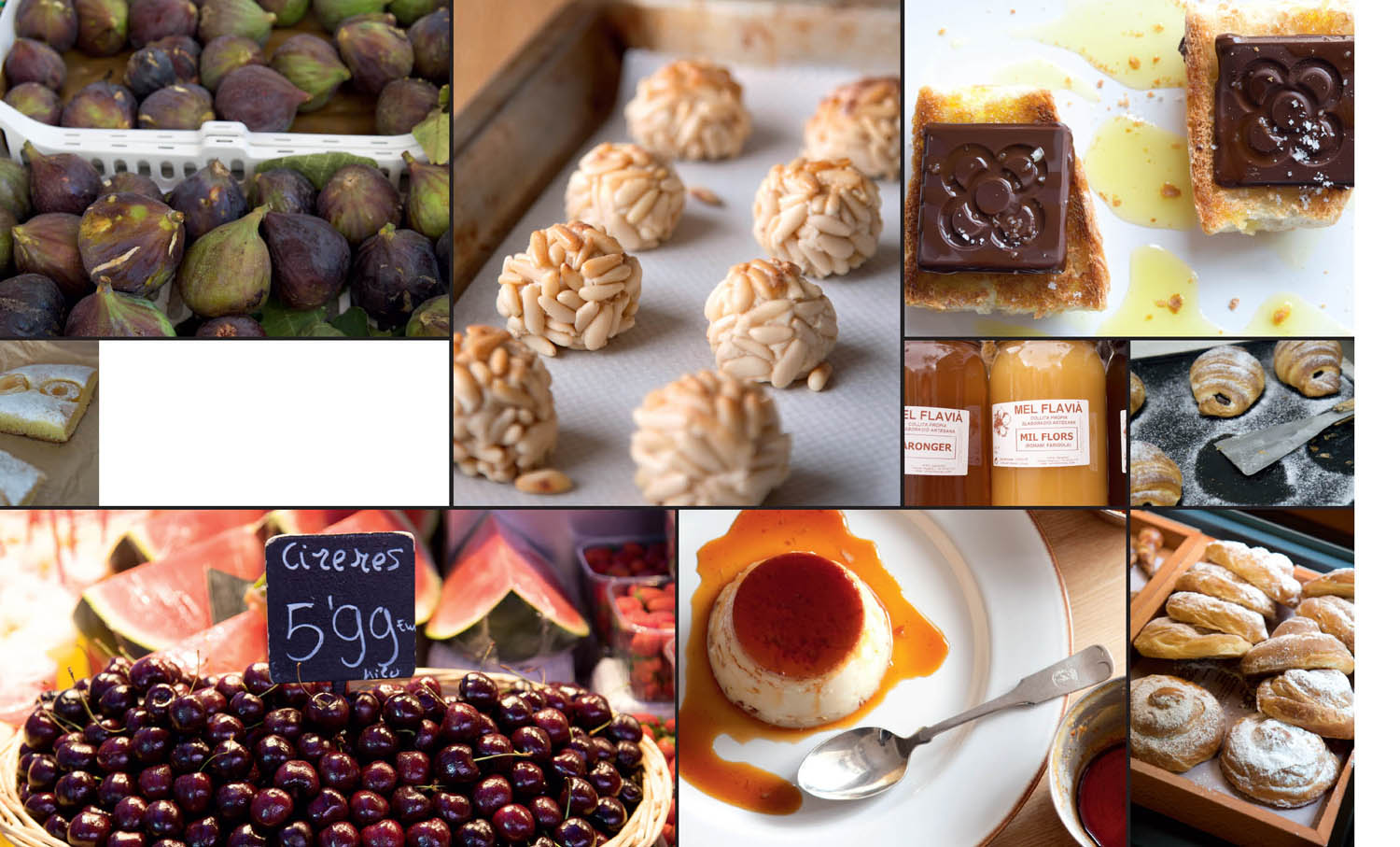

Peeled back, the archaeology of a cuisine reveals its sources and influences, its history and ancestors. In the Spanish kitchen, you can see it clearly in the sweets and respostería (baked goods). Every culture (or colony) has brought new influences, ingredients, and traditions to the peninsula, and added to the expanding recetario (recipe collection).
In classic antiquity, the ancient Greeks and Romans (I imagine; there are few records) utilized the ample honey, nuts, and flour at their disposal. The Moors brought true sweet splendor during their reign on the peninsula by introducing citrus fruits, sugarcane, and methods for processing sugar and showed what magic could be wrought from a base of almonds, lemons, and sugar. From abroad came the scent of cinnamon, nutmeg, and cloves, and, with the colonizing of the Americas, chocolate. Sweetened with sugar to rid its bitterness, and perfumed with vanilla and cinnamon, chocolate quickly found favor in Spain. Vanilla arrived in the peninsula in the fifteenth century from Mexico and Brazil. To these ingredients, add flour, eggs, milk, olive oil or butter, honey, dried fruits like raisins, and other nuts—hazelnuts, walnuts, pine nuts, and chestnuts—from the pantry, and you can create a whole wide world of dulces (sweets).
Many typical pastries are prepared for specific religious celebrations, such as buñuelos around Easter and round panellets with pine nuts (see page 291) and huesos de santos (filled marzipan “saints’ bones”) for All Saints’ Day. At Christmas, shortbread polvorones are favorites, along with turrón (nougat) and various marzipans. In Valencia, the Balearic Islands, and Catalunya, delicate, tubular neules are one of the oldest Christmas sweets. First recorded in a celebration of Jaume I in 1267, according to Néstor Luján, their shape took on their more familiar cylindrical form in the fourteenth century. “Cada cosa al seu temps i per Nadal, neules,” goes an archaic refrain (“Everything has its time and for Christmas, neules”).
Fresh fruit is an important part of the meal, and is usually served following the main course and before dessert (or strong coffee). Sometimes, it gets special treatment and becomes dessert. That might be as simple as tossing orange pieces with heady extra-virgin olive oil and a dollop of honey (see page 292). Usually, though, it means something more elaborate like figs baked in the oven with a splash of sweet dessert wine (see page 296), or pears poached in red wine (see page 295).
And in summer, there are sorbets. Sorbete, writes Inés Eléxpuru in La cocina de al-Andalus (The Cooking of al-Andalus), is derived from the Arabic word sherbet, from sharbah (to drink). Using ice stored in caves or natural wells—they could conserve the ice through the month of July—the Moors added “the essence of violets, bananas, roses, or melons, among many others.” These proved, she continues rather effusively, “effective against summer thirst and the boredom of caliphs and high-society who spent the lethargic hours of the afternoon in the shade of a jasmine tree, leaning against the azulejos [glazed decorated tiles] of the patio and being soothed by the gentle bubbling of the fountain.”
So many choices for a fruity finish—elegant, often light, always tasty options. From season to season, a perfect way to end a meal.